While I do have another interface I built a few years back on a PC board with isolation transformers, RS232 to PTT, VOX PTT and even a sound card to Morse keying interface, I prefer to use a more modular approach to interfacing HF transceivers to a sound card to use the various digital modes. Because getting on HF digital has been as simple as hooking up your transceiver to the sound card of your computer, there's been a wide range of new applications and modes available to experiment with over the past decade. I started playing around with PSK31 when it came out in the late 90s, and my first interface was a simple cable from my sound card to the back of my Icom 735, no audio isolation. I also used an RS232 to PTT that was made with a resistor and the perennial 2N2222a. It worked great, so keep this in mind.
Now, my current little HF rig, the FT-857 is not as simple to interface as some of the newer rigs like the Icom 7200 or the Kenwood TS590 which have built-in USB sound card and radio control, but it does provide a lot more functionality than my old 735. For starters, the radio has settings for audio gain when running digital, aka the back input/output on the rig. There's also a digital VOX and PTT through the CAT interface.
Part 1: The USB Serial Cable
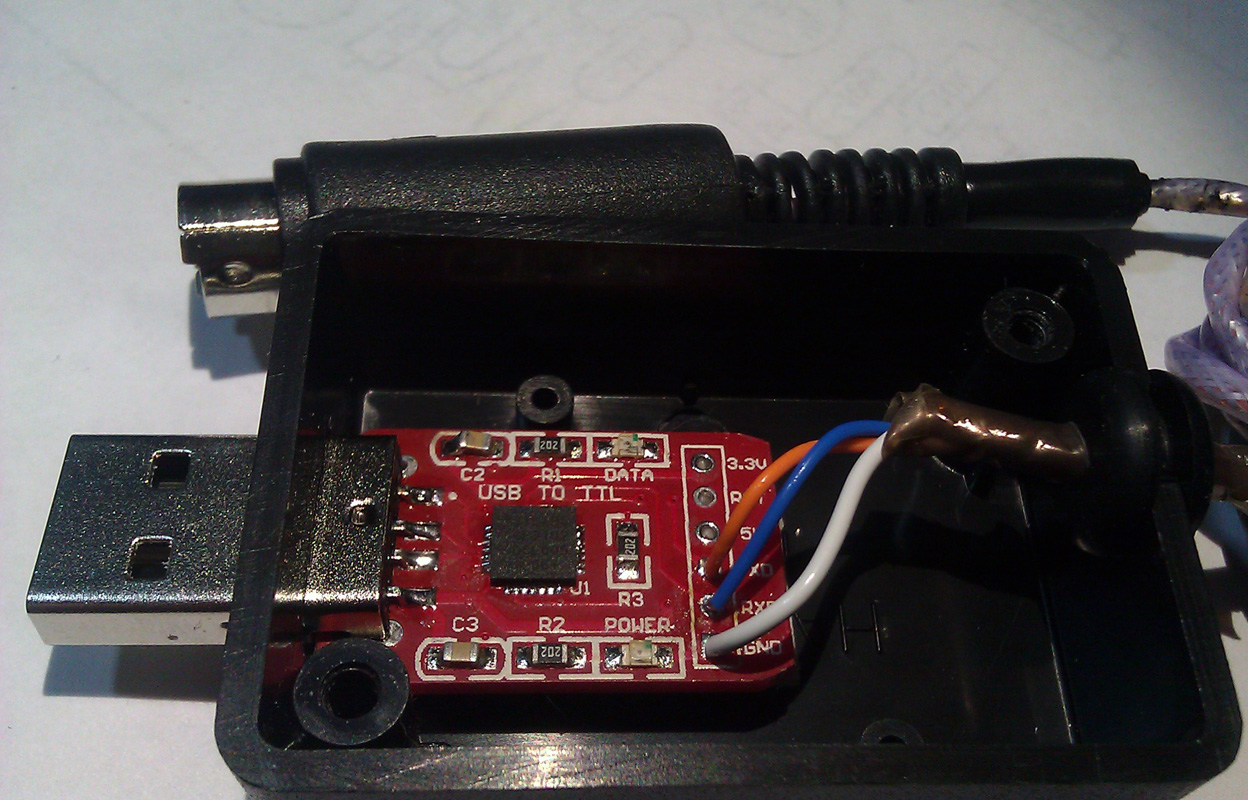 Almost all transceivers made since the mid 80s have some form of serial port interface which provide for the control of the mode, frequency, PTT and on the newer rigs, a lot more. If you've played with Ham Radio Deluxe, you actually get a pretty complete panel to control your radio. Most plans you'll find online or in the magazines are simple RS232 voltage converters (+12V to -12V) to TTL (0V to +5V). You can order USB cables from various sources, but they tend to use the Prolific PL2303 chip which has been cloned by Chinese chip manufacturers. Prolific has added an anti-clone feature in their drivers which is why all these USB programming cables from China do not work with the latest drivers. I had a CAT (Yaesu's name for this interface) USB cable with the PL2303 clone, and it simply died on me. My new interface uses the CP2102 from Silicon labs. The drivers actually work, and you can pick up the ready-made modules on eBay for less than 3$. As I said earlier, quite a few software support the PTT functionality directly through this interface, including my favorite software, FLDIGI. FLDIGI is available on most operating systems, including Linux. So when running FLDIGI, I get both the control of the mode/frequency and the PTT using my simple USB to CAT interface. See the pictures below. All that is required on the Yaesu and Kenwood is for the RX/TX and GND to be connected to the connector on the back of the transceiver. If you're using an Icom transceiver, the RX and TX would be tied together, since the interface is half-duplex. My module did not follow the convention of RX->TX, TX->RX, but rather RX->RX and TX->TX, so please be aware. If it's not working for you, simply swap the wires around. In windows, the interface will be assigned a Com port. Under Linux, it will be /dev/ttyUSB0, when the 0 could be a different number if like me you have more than one USB-Serial cable attached.
Almost all transceivers made since the mid 80s have some form of serial port interface which provide for the control of the mode, frequency, PTT and on the newer rigs, a lot more. If you've played with Ham Radio Deluxe, you actually get a pretty complete panel to control your radio. Most plans you'll find online or in the magazines are simple RS232 voltage converters (+12V to -12V) to TTL (0V to +5V). You can order USB cables from various sources, but they tend to use the Prolific PL2303 chip which has been cloned by Chinese chip manufacturers. Prolific has added an anti-clone feature in their drivers which is why all these USB programming cables from China do not work with the latest drivers. I had a CAT (Yaesu's name for this interface) USB cable with the PL2303 clone, and it simply died on me. My new interface uses the CP2102 from Silicon labs. The drivers actually work, and you can pick up the ready-made modules on eBay for less than 3$. As I said earlier, quite a few software support the PTT functionality directly through this interface, including my favorite software, FLDIGI. FLDIGI is available on most operating systems, including Linux. So when running FLDIGI, I get both the control of the mode/frequency and the PTT using my simple USB to CAT interface. See the pictures below. All that is required on the Yaesu and Kenwood is for the RX/TX and GND to be connected to the connector on the back of the transceiver. If you're using an Icom transceiver, the RX and TX would be tied together, since the interface is half-duplex. My module did not follow the convention of RX->TX, TX->RX, but rather RX->RX and TX->TX, so please be aware. If it's not working for you, simply swap the wires around. In windows, the interface will be assigned a Com port. Under Linux, it will be /dev/ttyUSB0, when the 0 could be a different number if like me you have more than one USB-Serial cable attached.Part 2: The Sound card Interface
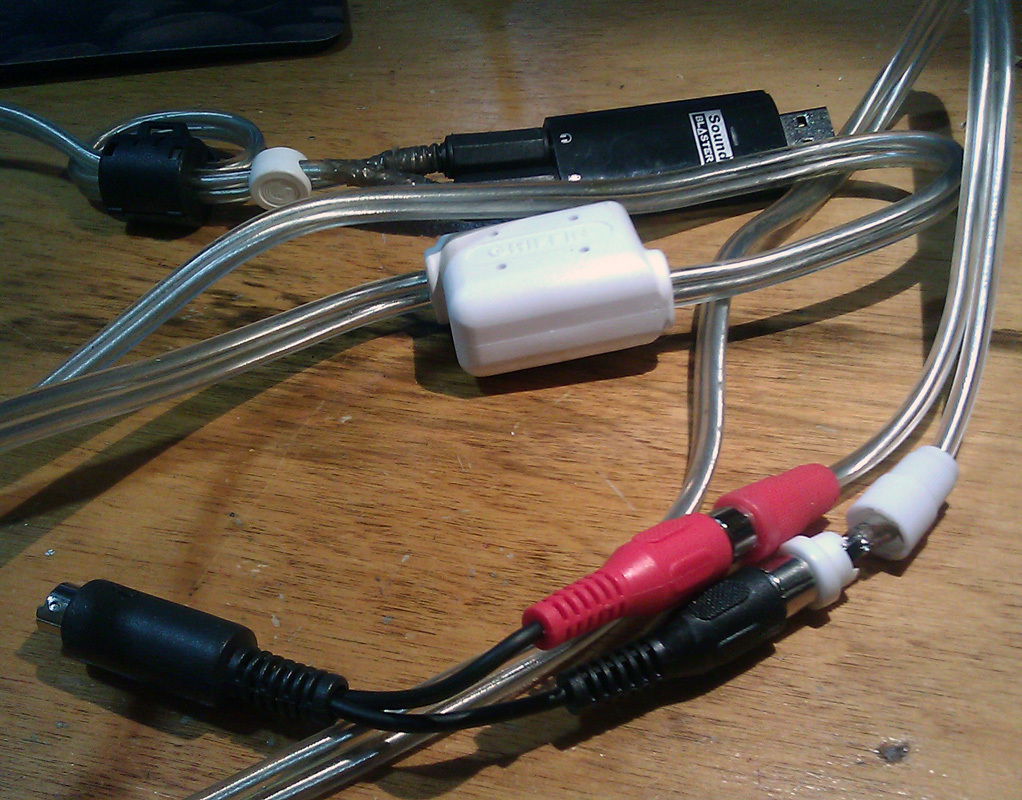
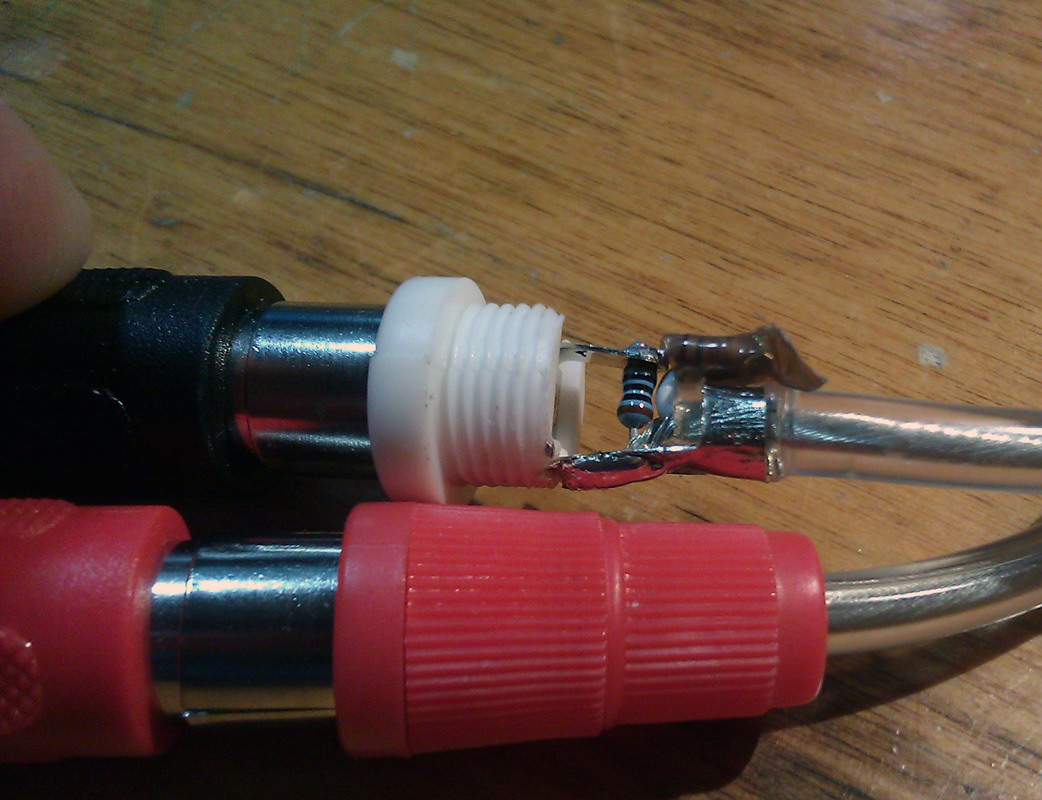 My audio interface is even simpler. I simply used half of an audio cable with female RCA jacks soldered to a mini-din8 on the ground, Audio in and Audio Out pins. I'm later going to add another RCA jack for the PTT line. My other cable is an eBay-special Griffin stereo isolation cable. While this cable is not available anymore, any similar cable/interface could be used. I installed 3.5mm stereo plugs on one end, and I replaced the male RCA on the other end so that I could make a simple voltage divider to reduce the audio amplitude of the signal so it would be more compatible with most transceivers out there. It's not required on the FT857 thanks to the programmable audio gain, but I want my cable to be compatible with most rigs. The voltage divider is simply two resistors, 10k and 1k, soldered inside the RCA jack going to the audio in of the transceiver. You can see that I'm also using a USB sound card. This is mostly to avoid transmitting operating system sounds and some laptops lack any form of audio input.
My audio interface is even simpler. I simply used half of an audio cable with female RCA jacks soldered to a mini-din8 on the ground, Audio in and Audio Out pins. I'm later going to add another RCA jack for the PTT line. My other cable is an eBay-special Griffin stereo isolation cable. While this cable is not available anymore, any similar cable/interface could be used. I installed 3.5mm stereo plugs on one end, and I replaced the male RCA on the other end so that I could make a simple voltage divider to reduce the audio amplitude of the signal so it would be more compatible with most transceivers out there. It's not required on the FT857 thanks to the programmable audio gain, but I want my cable to be compatible with most rigs. The voltage divider is simply two resistors, 10k and 1k, soldered inside the RCA jack going to the audio in of the transceiver. You can see that I'm also using a USB sound card. This is mostly to avoid transmitting operating system sounds and some laptops lack any form of audio input.Part 3: The Optional RS232 PTT Interface
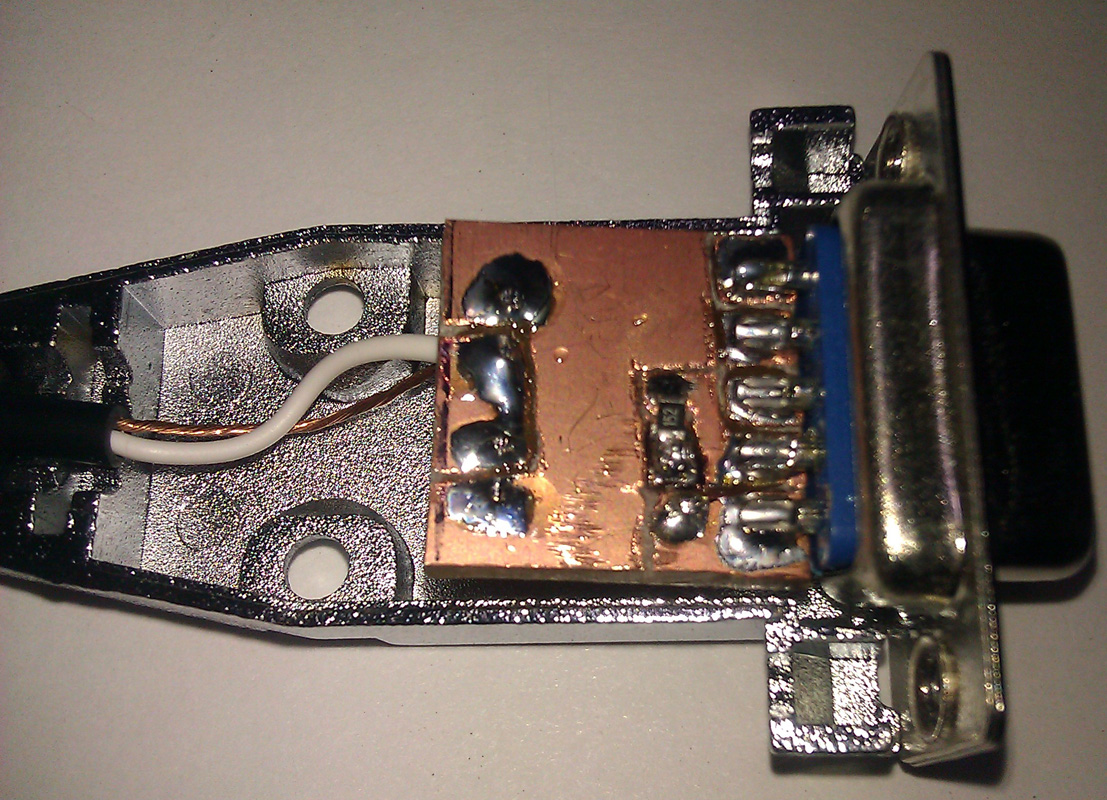 This interface is simply an opto-isolator inside a DB9 housing. It can be used with any serial port, including most USB-Serial cables. The CP2102 module I discussed earlier lacks the required RTS or DTR signals. To keep the little PCB as simple as possible, I only use the DTR. The PCB was done freehand using a Dremel tool. You can find the schematic of the interface online or even in the ARRL handbook. This interface would be required if the software does not support CAT PTT, VOX is not available or undesirable. An example of this would be when running the UZ7HO sound card packet modem. There are numerous amateurs using APRS on HF with this modem. Alternatively, it could also be used as a software Morse keyer. N1MM and other logging software support this as well as the CW-daemon in Linux.
This interface is simply an opto-isolator inside a DB9 housing. It can be used with any serial port, including most USB-Serial cables. The CP2102 module I discussed earlier lacks the required RTS or DTR signals. To keep the little PCB as simple as possible, I only use the DTR. The PCB was done freehand using a Dremel tool. You can find the schematic of the interface online or even in the ARRL handbook. This interface would be required if the software does not support CAT PTT, VOX is not available or undesirable. An example of this would be when running the UZ7HO sound card packet modem. There are numerous amateurs using APRS on HF with this modem. Alternatively, it could also be used as a software Morse keyer. N1MM and other logging software support this as well as the CW-daemon in Linux.Part 4: Digital Modes Software and Random Ramblings
There are a few software I find more interesting. FLDIGI is the Swiss army-knife of digital modes. I'm only aware of one software that supports more different modes, MultiPSK, but I find it not user-friendly and it does not run on Linux. PSK Mail is a software than runs of top of FLDIGI and provides ARQ email throughout the world (Think Amtor, Pactor). Winmor is a modem that can be used with RMS Express to provide access to the Winlink 2000 system without an expensive SCS-PTC Pactor modem. While I would not rely on Winmor to do mission-critical emails, it can be useful to check your emails if you're in an area that does not have any other forms of coverage. Winmor is only available on Windows.
I don't recommend using the microphone jack unless your rig only has this input. The microphone jack has much more gain than the digital port at the back of your radio and this can lead to over-modulation. Most commercially made interfaces simply regroup all these functionalities in a pretty box. The wildly popular Signalink interface from Tigertronics is a USB soundcard with audio isolation and a VOX setup. The VOX would be redundant on my transceiver, and I prefer not to use VOX, as it tends to mangle most ARQ modes, like HF packet. The first few milliseconds of the transmission would be missing because VOX always has latency.

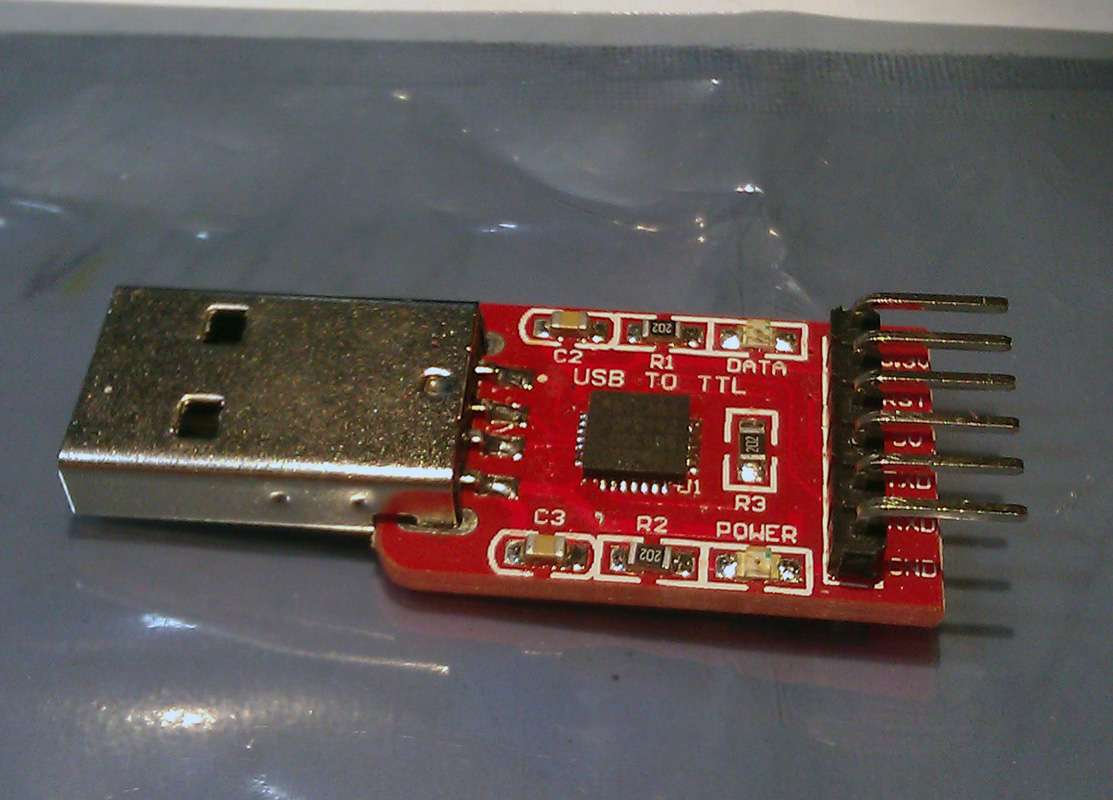
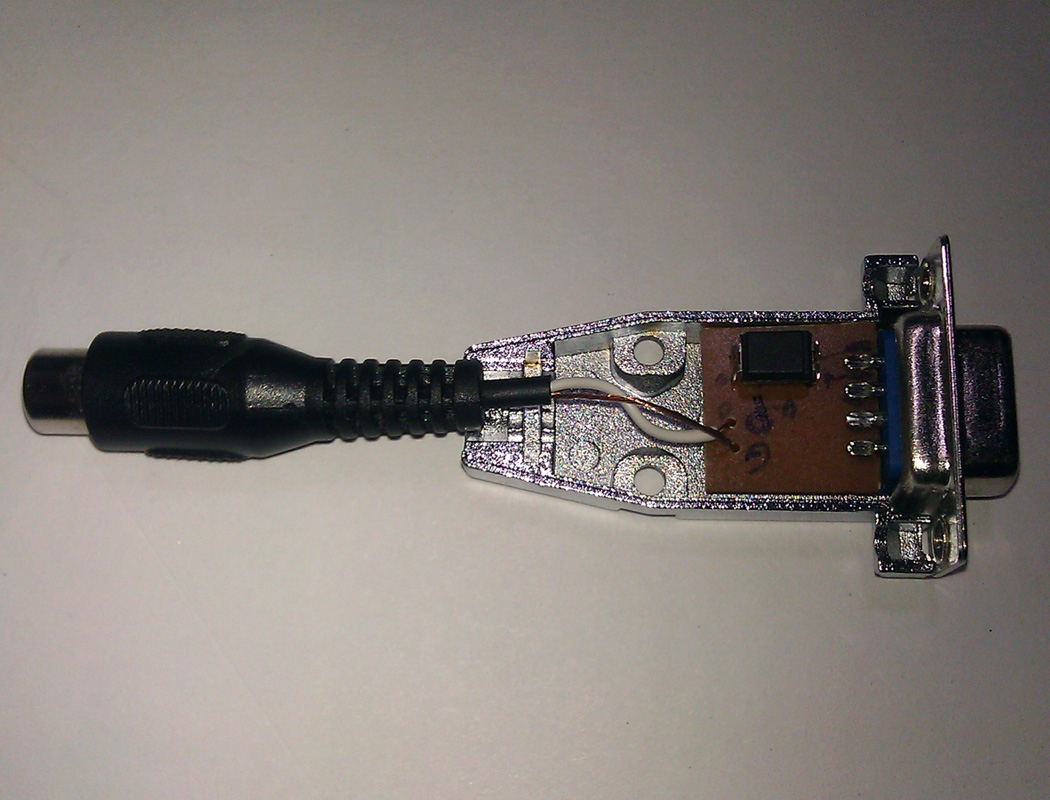
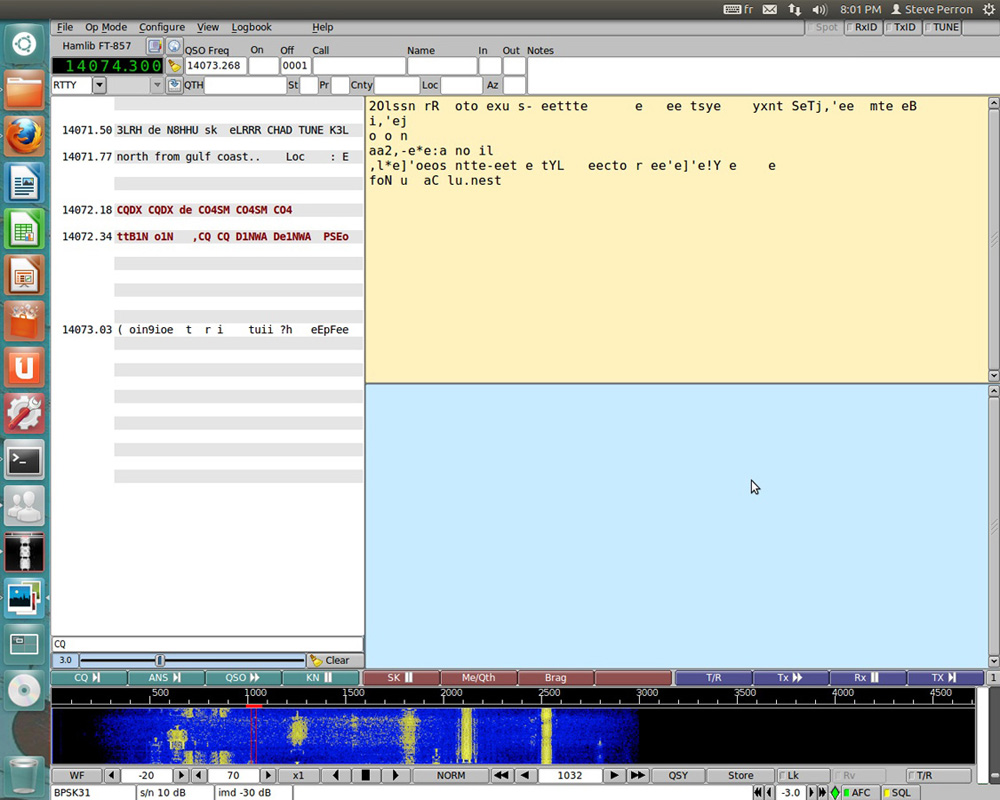
Nice Article.... I see lot's more room here to expand !!!!..
ReplyDelete